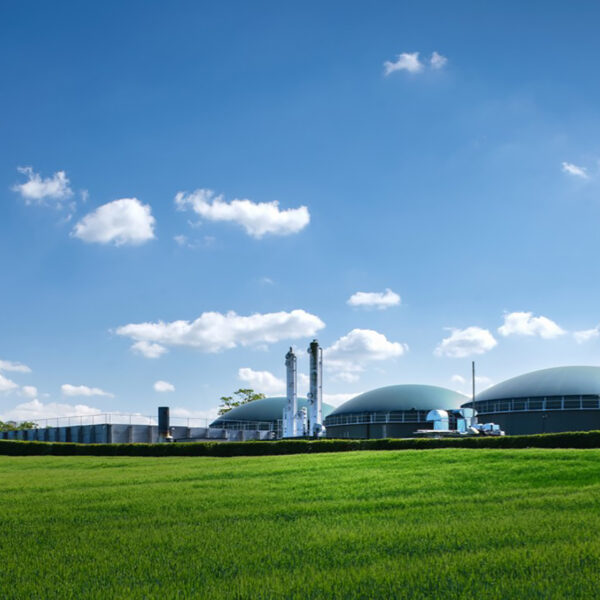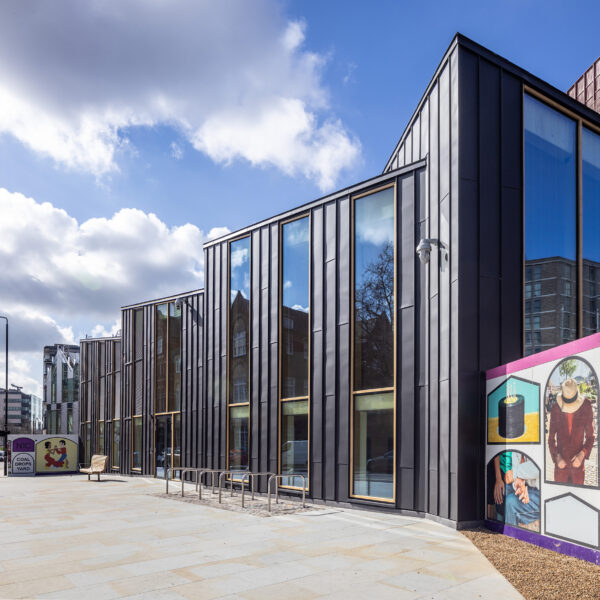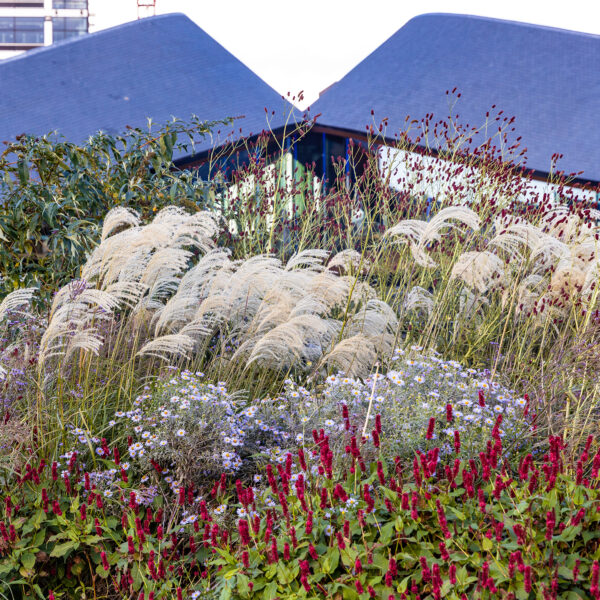King's Cross is powered solely by renewable energy
The District Energy Network
At the heart of our approach to energy efficiency and sustainability is the on-site Energy Centre with its Combined Heat and Power Plant (CHP). It is one of the most advanced district energy networks in the UK and it is powered solely by renewable energy.
Buildings at King’s Cross are connected to the Energy Centre through a network of pipes distributing heating and hot water directly into homes, offices, shops and restaurants. This is a very energy-efficient way to heat the buildings and it means that there is no need for conventional boilers in the buildings themselves.
This low carbon heat and power supply, combined with cleverly designed, energy-efficient buildings helps to make King’s Cross one of the most sustainable developments in the UK.
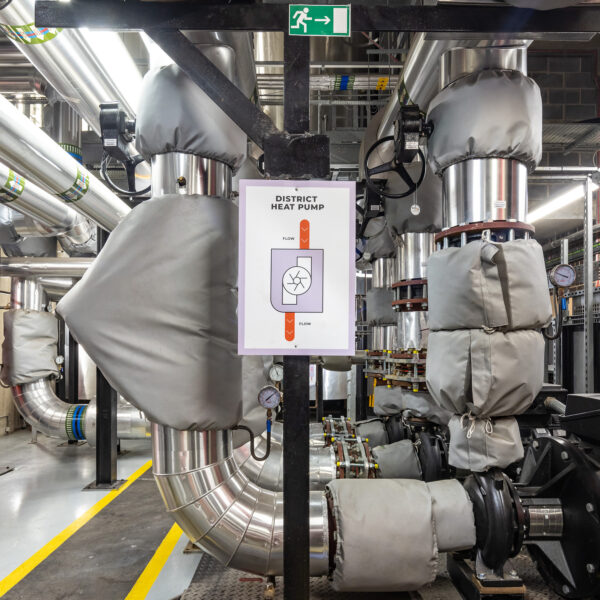
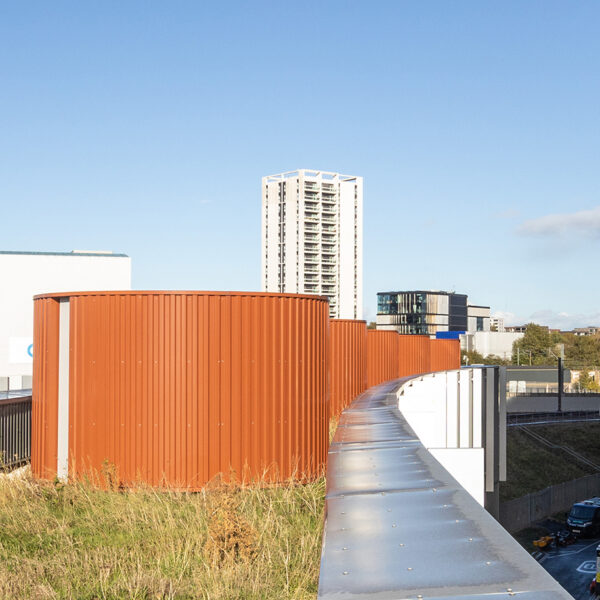
The Energy Centre
The King’s Cross Energy Centre houses boilers and a Combined Heat and Power (CHP) plant.
The energy centre is 100% powered by renewable energy. The CHP engines also generate electricity which powers a unique district cooling network, providing cooling to a quarter of the buildings.
CHP – how does it work?
Power plants emit heat during electricity generation. This heat is usually wasted and released into the atmosphere. At a Combined Heat and Power (CHP) plant, heat is captured and put to good use.
At King’s Cross, two biogas-powered Jenbacher engines generate electricity. The heat from the engines is fed to the buildings via a site-wide hot water distribution network. CHP is one of the most efficient ways of reducing carbon emissions from heating.
As well as providing electricity, hot water and heating, the CHP plant also helps to meet the cooling requirements of the office buildings using a process called trigeneration. Here absorption chillers use waste heat to provide the energy needed to drive the cooling system. This is much more energy-efficient than traditional cooling methods.
A renewable future
In May 2021, the entire gas supply for the King’s Cross estate moved to renewable ‘green gas’, including supply from an Anaerobic Digester facility near Dumfries in Scotland. The heating and hot water for the estate’s 1,120 homes and 2 million sq ft of office, retail and dining space is provided via biomethane. Learn more about Anaerobic digestion and green gas here.
The biomethane also powers the cooling pod which provides district cooling to approximately a quarter of the buildings at King’s Cross.
We purchase renewable electricity from REGO certified tariffs.

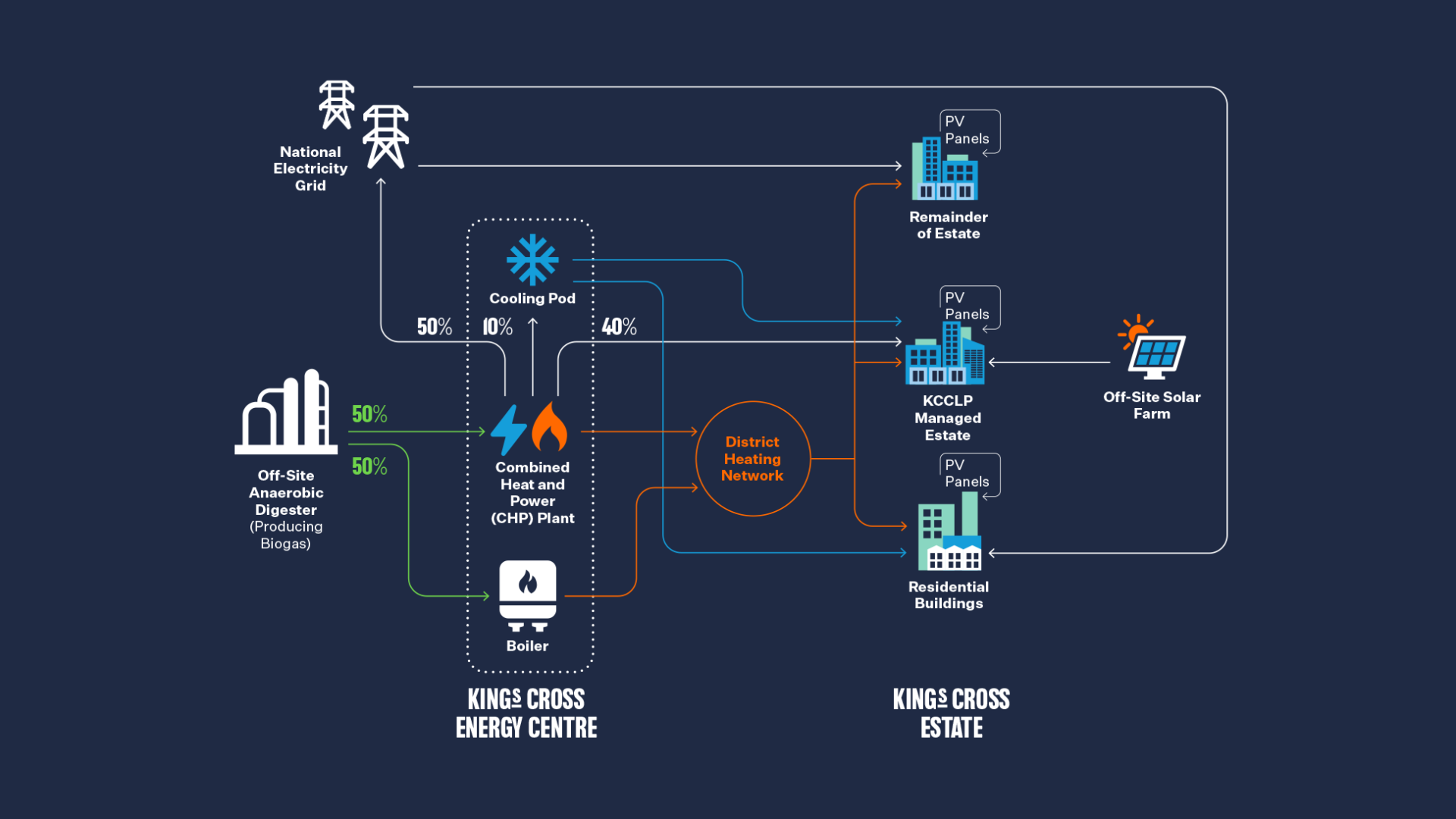
Why are the CHP engines pink?
The first CHP Jenbacher engine to arrive at King’s Cross was nick-named the Pink Panther and painted bright pink in support of breast cancer research.
When it was making the journey from Jenbach in Austria, the team trailed the engine by bike in a 750-mile charity cycle ride. The team’s ride saw them cycle on average 85 miles per day through the Alps, Germany and France. The plan was to raise £30,000 for two charities – Breast Cancer Research and Global Generation, a local charity that gives young people opportunities to play a part in creating a sustainable future.
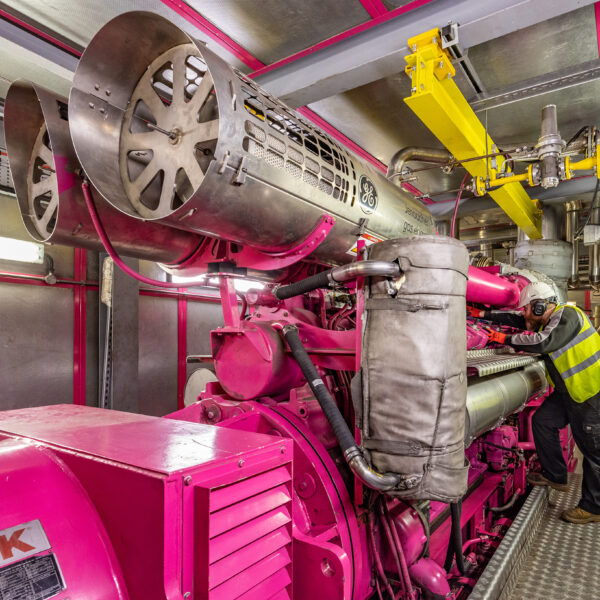
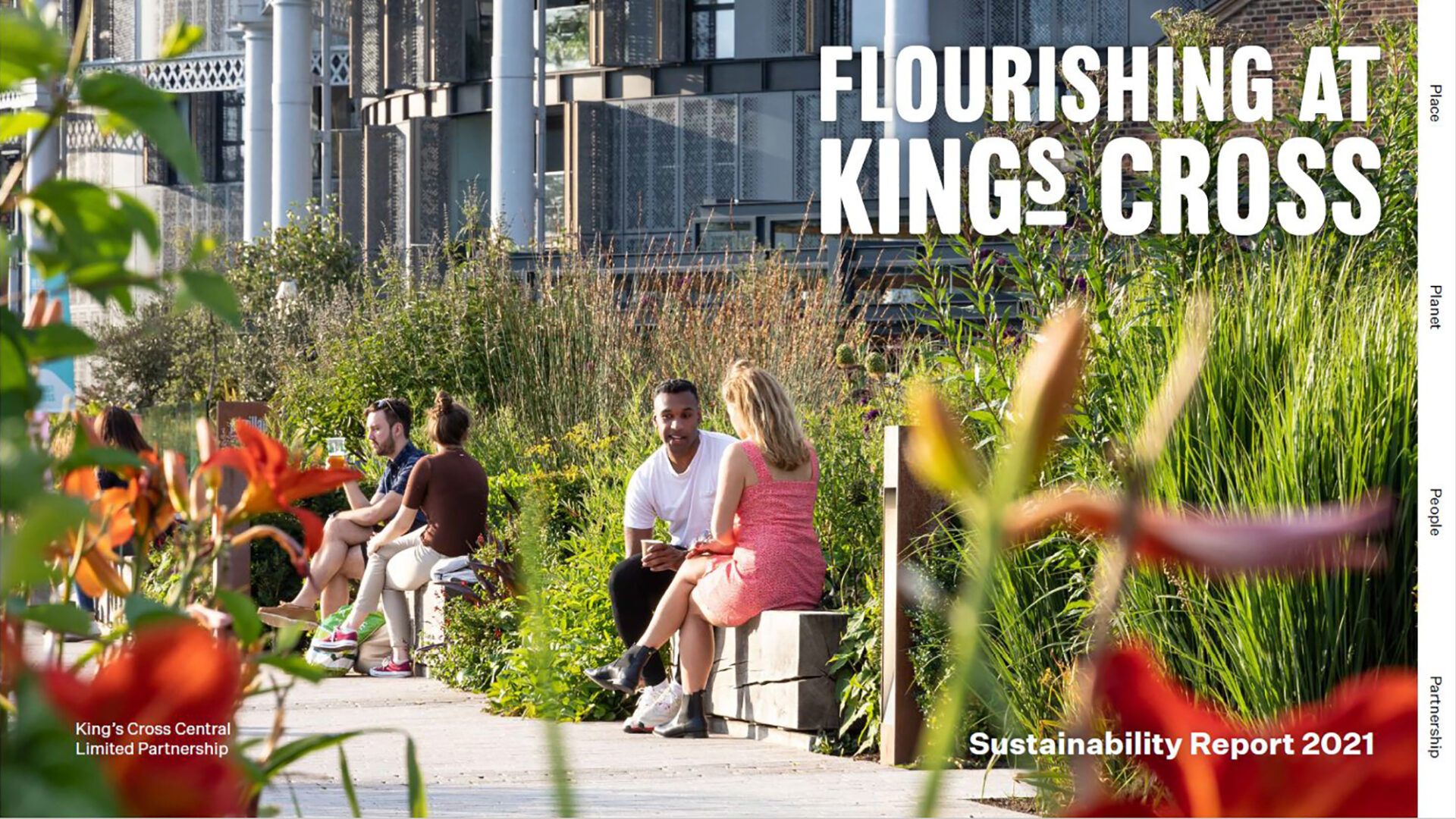
The King’s Cross Environmental and Social Sustainability Report
We have defined a vision for King’s Cross as a place where people and the planet can flourish together. This report sets out our ambitious environmental, social and governance targets and outlines what we’re doing to meet them.
